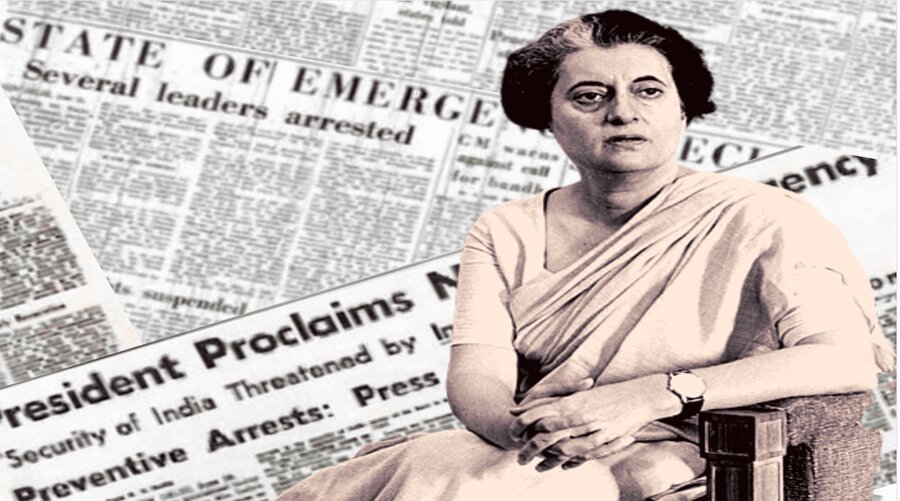The Indian Emergency, also known as the “Internal Emergency,” holds great significance in Indian history. Lasting for 21 months from 1975 to 1977, it was a state of emergency imposed by Prime Minister Indira Gandhi to solidify her power base.
Imposing the Emergency: Consolidating Power or Violating Civil Liberties?
Under the guise of maintaining “internal security,” Indira Gandhi declared the Indian Emergency on June 25, 1975. This move was triggered by her conviction in the Allahabad High Court for electoral malpractice, with a potential threat of resignation looming.
Unveiling the Official Declaration of the Indian Emergency in 1975
The official declaration of the Emergency came as a response to Prime Minister Gandhi’s fear of resignation, as it allowed her to maintain control over the country and restore what she believed was order in India.
Suspended Liberties and Censored Press: The Dark Side of the Indian Emergency
During this period, civil liberties were suspended, press censorship was heavily enforced, and political opponents were detained without any trials. Such actions resulted in the suppression of democracy and fuelled opposition within the nation.
Targeting Political Opposition: Arrests and Detentions Without Trial
To suppress opposition, Prime Minister Gandhi’s government arrested and detained political opponents without providing them with a fair trial, further undermining democratic principles.
Forced Sterilization Campaign: An Attempt to Control Population Growth
Concerned about population growth, the government launched a controversial forced sterilization campaign that primarily targeted impoverished and marginalized communities. Sadly, this campaign had severe consequences, resulting in numerous deaths and injuries.
Vocal Opposition Against the Emergency
The Indian Emergency was met with strong opposition from various segments of society, including political leaders, students, and civil rights activists. Prominent figures like Jayaprakash Narayan spearheaded the call for a “Total Revolution” to overthrow the government.
Leadership in Defiance: Jayaprakash Narayan’s Call for “Total Revolution”
Jayaprakash Narayan, a prominent political leader, emerged as a voice of defiance against the Indian Emergency. His call for a “Total Revolution” galvanized protesters, offering hope in a turbulent period.
Lengthy Reign of the Emergency: 21 Months That Shaped a Nation
Despite intense opposition, the Emergency persisted for 21 months, leaving an indelible mark on the nation’s history, democracy, and institutions. The significant restrictions on civil liberties led to growing public discontent.
Public Discontent and Declining Popularity of Prime Minister Indira Gandhi
The heavy-handed tactics employed during the Indian Emergency led to a decline in the popularity of Prime Minister Indira Gandhi and her party, the Indian National Congress. Widespread public discontent further weakened her grip on power.
The End of the Indian Emergency: New Elections and a Defeated Congress Party
The Indian Emergency concluded on March 21, 1977, when new elections were held. These elections resulted in a significant defeat for the Indian National Congress, opening the door for a new government led by the Janata Party.
Controversies and Debates: The Legacy of the Indian Emergency
The Indian Emergency serves as a reminder of the fragility of democratic institutions and the importance of maintaining checks and balances to prevent the concentration of power in the hands of a single individual or group. It also highlights the need for a vigilant and active citizenry to hold those in power accountable and to protect the rights and freedoms of all individuals.
Additionally, the Emergency also had a significant impact on the economy. The government implemented a number of economic policies aimed at controlling inflation and reducing the budget deficit. However, these policies were criticized for being poorly implemented and for having a negative impact on the economy.
The forced sterilization campaign, for example, was heavily criticized for being poorly planned and executed, leading to a number of deaths and injuries. Additionally, the government’s efforts to control inflation led to shortages of essential goods and a decline in purchasing power.
The Indian Emergency also had a significant impact on the country’s political landscape. The Congress party, which had been the dominant political force in India for decades, suffered a significant defeat in the 1977 elections. This led to a shift in power away from the Congress party and towards regional and opposition parties.
Furthermore, the Indian Emergency also had a significant impact on the relationship between the government and the judiciary. During the emergency, the government attempted to exert greater control over the judiciary and to limit its independence. This led to a number of conflicts between the government and the judiciary, and ultimately, to a decline in the public’s trust in the judiciary.
Overall, the Indian Emergency was a dark period in India's history, marked by the suspension of civil liberties and the erosion of democratic institutions. It had a significant impact on the country's economy, political landscape, and relationship between the government and the judiciary. The legacy of the Indian Emergency serves as a reminder of the importance of maintaining a balance of power and the need for a vigilant and active citizenry to protect the rights and freedoms of all individuals.
In conclusion
The Indian Emergency was a 21-month period from 1975 to 1977 when the Prime Minister of India, Indira Gandhi, imposed a state of emergency across the country in an effort to consolidate her power. The emergency led to the suspension of civil liberties, censorship of press and the arrest of political opponents. The government also launched a forced sterilization campaign targeting poor and marginalized communities.
The Emergency had a widespread opposition from political leaders, students, and civil rights activists. The emergency officially ended in 1977 and new elections were held. The legacy of the Indian Emergency remains a controversial and debated topic in Indian politics and serves as a reminder of the fragility of democratic institutions and the importance of maintaining checks and balances to prevent the concentration of power.
READ MORE
- International Women’s Day Progress
- Six Stages of French Revolution
- पिता का एक व्यक्ति के जीवन में महत्व
- Einstein’s E=mc² Explained
- CHATGPT:- A NEW ROVOLUTION IN AI
- Radio का इतिहास और विकास यात्रा

